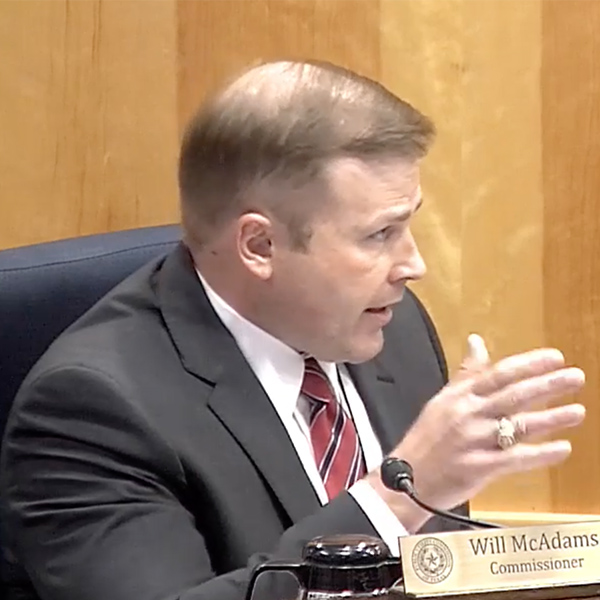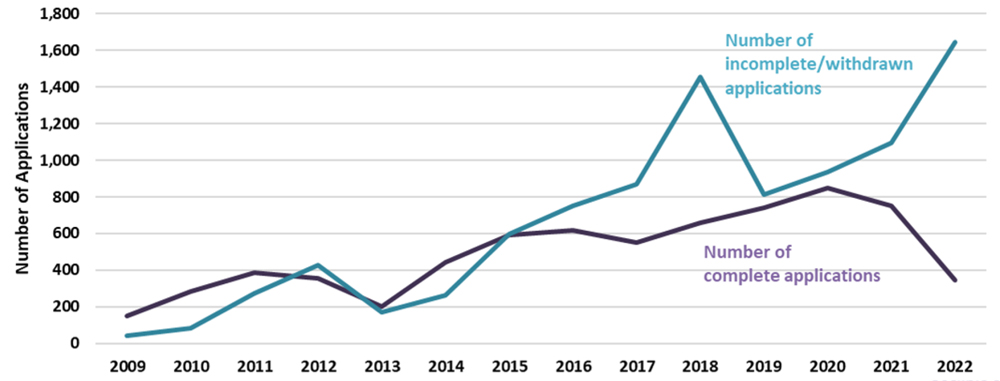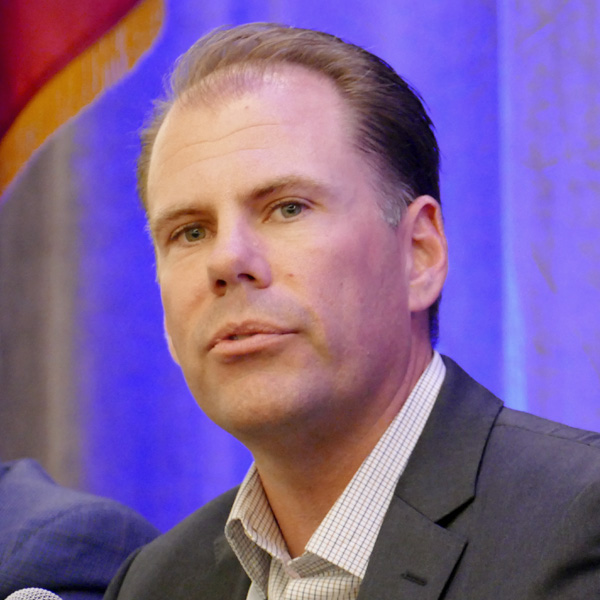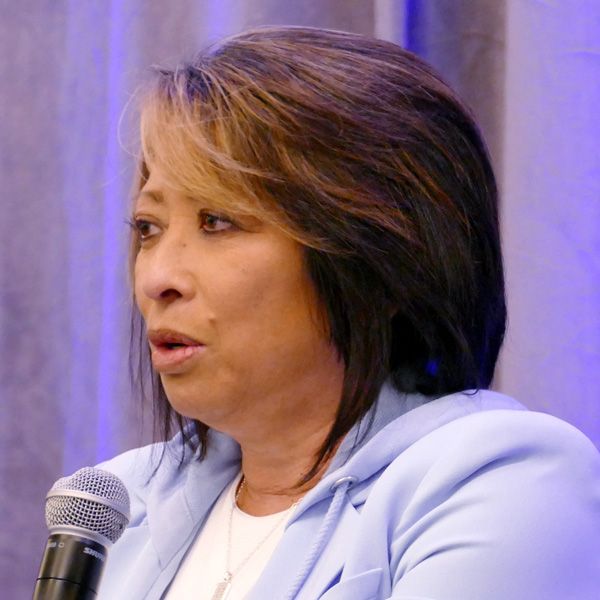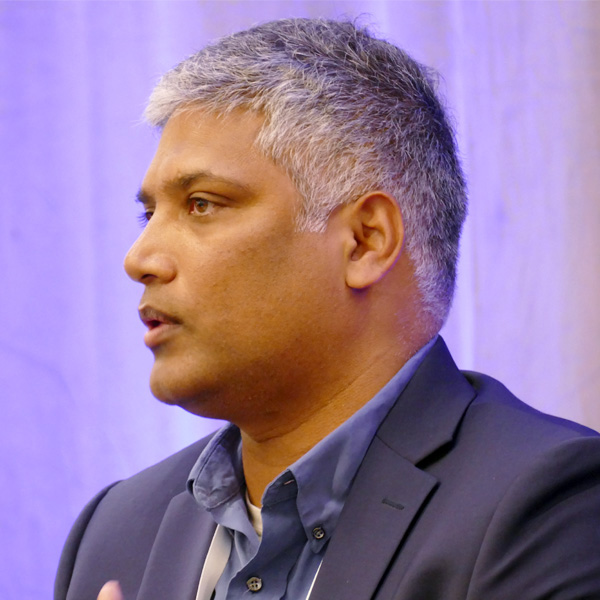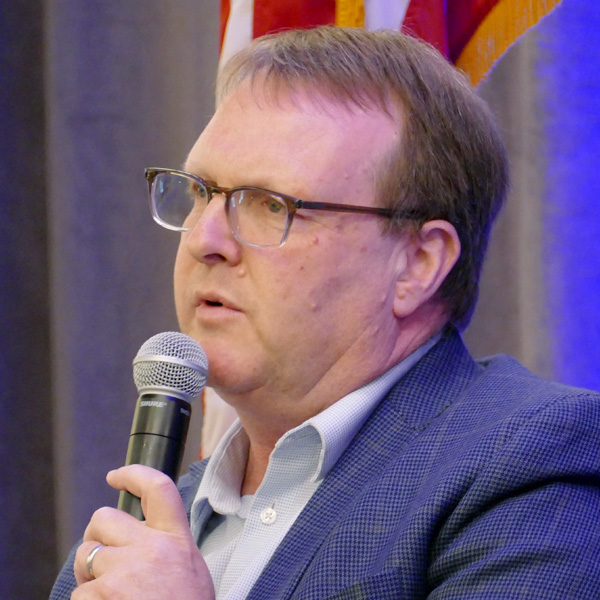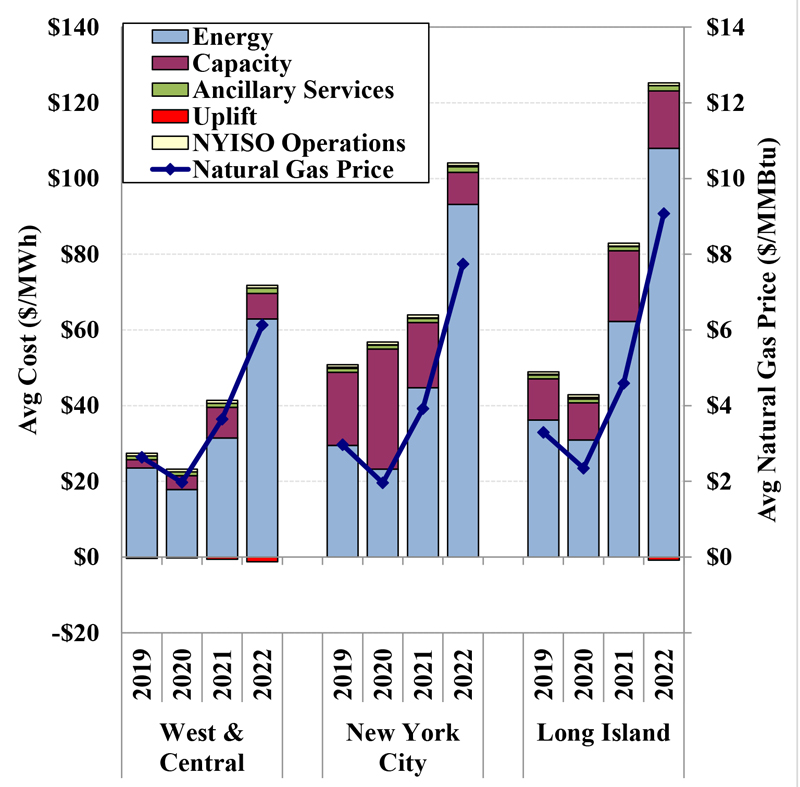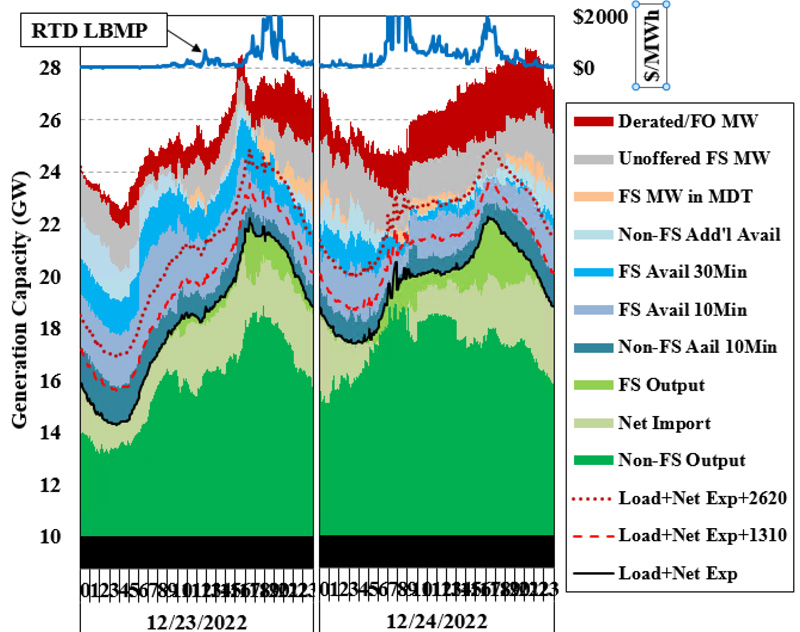New Ancillary Service Products Target System Reliability
ERCOT staff last week delivered their first annual settlement report on firm fuel supply service (FFSS), an ancillary service that was added in the wake of the February 2021 winter storm.
Settlement analyst Maggie Shanks told the Technical Advisory Committee on May 23 that ERCOT designated 19 generation resources as primary FFSS resources during the Nov. 15-March 15 obligation period at a clearing price of $6.19/MW-hour, or $18,000/MW. The grid operator procured 2,940.5 MW of FFSS capacity at a cost of $52,839,535.
An additional $4,768,842 will be added for fuel replacement costs during the two winter watches ERCOT issued in December. The total cost will be reduced by clawing back an estimated standby fee of more than $25 million. The clawback settlements began in May and will end in September. Fuel replacement costs will be settled July 31-Aug. 1.
Clawback charges are assessed to FFSS resources that do not meet 90% availability in their availability plan during a winter weather watch’s hours or if they fail to come online and stay there during an FFSS deployment because of nonfuel-related issues.
ERCOT assessed clawback charges for 90 days for seven FFSS resources that did not reflect their availability. Another resource received a clawback charge for 15 days under the second scenario.
The Texas Public Utility Commission directed ERCOT to develop the FFSS product after the Legislature passed a bill in 2021 requiring ancillary or reliability services that address reliability during extreme cold weather conditions. The service is procured through a request-for-proposals process before the obligation period begins.
The grid operator is adding another new ancillary product in June with ERCOT contingency reserve service (ECRS), or capacity that can be sustained at a specified level for two consecutive hours. It is meant to be deployed to restore frequency within 10 minutes of a significant deviation; to compensate for intra-hour net load forecast uncertainty when large amounts of online thermal ramping capability are not available; or when limited capacity is available for dispatch.
ECRS is also a result of the PUC’s directive to offer more reliability services.
Matt Mereness, senior director of market operations and implementation, said staff have been holding weekly meetings and workshops to prepare market participants. The service will become operational June 10, when telemetry will begin including ECRS values at 12:01 a.m.
Mereness also said staff are re-evaluating the scope, cost and schedule for the real-time co-optimization (RTC) project, which has been on hold since the 2021 winter storm. Staff are still eyeing a potential midyear restart for the program; it would expand ERCOT’s real-time market by clearing energy and ancillary services every five minutes, as most other grid operators already do.
ERCOT leadership has said RTC’s reliability benefits in addressing future operational challenges make the tool a strategic priority.
ERCOT Compromises on FFSS Product
TAC members endorsed a nodal protocol revision request (NPRR1167) intended to improve the new FFSS product, but not before accepting staff’s suggestion to remove language disqualifying or decertifying resources from the firm-fuel program. That language will be brought back to the committee as a separate NPRR.
ERCOT staff and stakeholders disagreed over the types of performance failures that would start the disqualification process, with some stakeholders saying the failure must be related to a fuel-related issue. Staff said they want to be able to address a situation where there are multiple instances of the unit not being able to run, regardless of the reasons.
ERCOT had filed comments proposing to remove references to fuel-related issues that would disqualify or decertify a resource from FFSS participation for “repeated instances of the specified performance failures.” Removing the fuel-related limit is appropriate, staff said, because “FFSS is a high-reliability product.”
“Given that the ERCOT board has a tendency to support ERCOT staff on issues, I would hate for this to be a lost opportunity here at TAC,” said Eric Goff, who represents residential consumers. “I think it would be good if we can find some sort of middle ground on this issue.”
After a sidebar discussion, staff agreed to accept the NPRR as approved by the Protocol Revision Subcommittee on May 10 and bring back the decertification language in another revision request.
Generators supported the PRS-approved language and the proposed future NPRR, saying ERCOT’s suggestions make performance issues too financially unfavorable.
The NPRR includes:
- a requirement in the availability plan’s definition that plan updates be made within 60 minutes after the change in availability when a resource submits the plan after a change;
- more detailed direction to incorporating an alternate generation resource that may be designated as an FFSS resource;
- another requirement that ERCOT post an FFSS offer’s disclosure report after each procurement period;
- clarified language regarding procedures for communication between ERCOT and qualified scheduling entities (QSEs) when restocking fuel post-FFSS deployment; and
- moving the obligation to test prospective FFSS resources before the procurement process.
Another Reliability Tool for ERCOT
TAC overcame concerns about “optics” in approving a revision request (NPRR1143) that allows ERCOT to give charging instructions to energy storage resources during a Level 3 energy emergency alert.
“This NPRR is not a fall-on-the-sword issue for us, but we feel strongly that the optics of charging and allowing charging of batteries in an EEA Level 3 when you have involuntary load shed is horrendous,” said Mark Dreyfus, who represents the city of Eastland and other municipalities in the consumer segment.
“I understand people’s concerns about the optics … but I think at the end of the day, failing to give ERCOT as many reliability tools as they can have is probably a bigger risk,” countered NextEra Energy Resources’ John Ritch. “The optics could cut either way, right? People are concerned about the optics of load being shed while batteries are charging, right? There’s an alternative scenario where frequency was healthy for a while and batteries weren’t charged, and then there’s a subsequent event where batteries would have been useful and more load is lost, right?”
“I think at the end of the day, the guiding objective here should be to give ERCOT the broadest number of reliability tools that they can have,” Ritch added.
The NPRR was amended to include comments from ERCOT clarifying language that has since been added to the protocols by NPRR1002.
The measure passed 22-1 with six abstentions. South Texas Electric Cooperative (STEC) cast the lone dissenting vote, saying charging a battery when firm load shed is occurring is “unacceptable.”
“At the end of the day, we have members to serve, and it is of the highest importance to us to ensure that they have the power they need so they can survive,” said Clif Lange, STEC’s general manager and TAC’s chair. “Some might call it an optics issue, but we believe it is a public welfare issue.”
Fuel-cost Discussion Tabled
The committee tabled NPRR1177, which requires resources to file exceptional fuel costs that include contractual and pipeline-mandated costs. The NPRR avoids the risk of real-time mitigation that results in unrecoverable financial losses and improves ERCOT’s and the Independent Market Monitor’s ability to verify these costs.
TAC scheduled a June 5 webinar to further discuss the measure.
The move came after the consumer segment filed comments May 22 proposing a 2027 sunset to ensure the measure is replaced with a permanent solution and created three additional guardrails: requiring QSEs to complete an attestation that the forward-fuel contract costs are known and actual; allowing ERCOT to prohibit a QSE or resource from using the functionality if they submit offers that exceed their costs; and directing the grid operator to develop standardized fuel contract language.
ERCOT staff asked for more time to review the comments that were submitted the day before, saying they believe additional guardrails are needed but that some of the changes need to be clarified.
Constellation Energy Generation’s Andy Nguyen, who drafted and filed the NPRR in April, said he would have “heartburn” over the delay and offered to provide desktop edits.
“The current protocols do not have a cost recovery mechanism for mitigation losses,” Nguyen said.
Credit Group’s Leadership Approved
TAC’s combination ballot, passed unanimously with one abstention, endorsed the Credit Finance Sub Group’s leadership. Austin Energy’s Brenden Sager will serve as chair, and NRG Energy’s Loretto Martin will serve as vice chair; both ran unopposed.
The group was created this year, replacing the Credit Working Group. It comprises credit professionals responsible for ensuring that appropriate procedures are implemented to mitigate credit risk in ERCOT in a “fair and equitable” manner.
The combo ballot included five NPRRs, two revisions to the Nodal Operating Guide (NOGRRs) and a single change to the Retail Market Guide (RMGRR) that, if approved by the board, would:
- NPRR1161, NOGRR246: clarify that intermittent renewable resources that remain synchronized to ERCOT, but are unable to provide reactive power when not providing real power, do not have to notify ERCOT other than their real-time telemetered status.
- NPRR1166: change the expiration date for DC ties’ schedule information protected status from 60 days after the applicable operating day to the date on which ERCOT files the report with the PUC, as required by transmission export rates’ rules related to energy imports and exports over the ties.
- NPRR1168: change the Texas standard electronic transaction (Texas SET) to “Establish/Change/Delete CSA Request” and add new sections to the protocols related to administering requests to change end dates for active continuous service agreements (CSAs).
- NPRR1169: expand the qualifications for generation resource that may be an FFSS resource or an alternate.
- NPRR1178: clarify and update expectations for resources providing ECRS.
- NOGRR253: align the guide’s language regarding ECRS and nonspin with NPRR1178’s proposed revisions and NPRR1096’s proposed protocol language. The NOGRR would also clarify that ERCOT may manually deploy load resources, other than controllable load resources that are providing ECRS or responsive reserve, to maintain a minimum 500 MW of physical responsive capability reserves on dispatchable resources to balance demand with supply while maintaining stable grid frequency for smaller disturbances.
- RMGRR172: update the Texas SET transaction’s name to “Establish/Change/Delete CSA Request” and add new sections to the guide that describe how to cancel a pending CSA through MarkeTrak.
